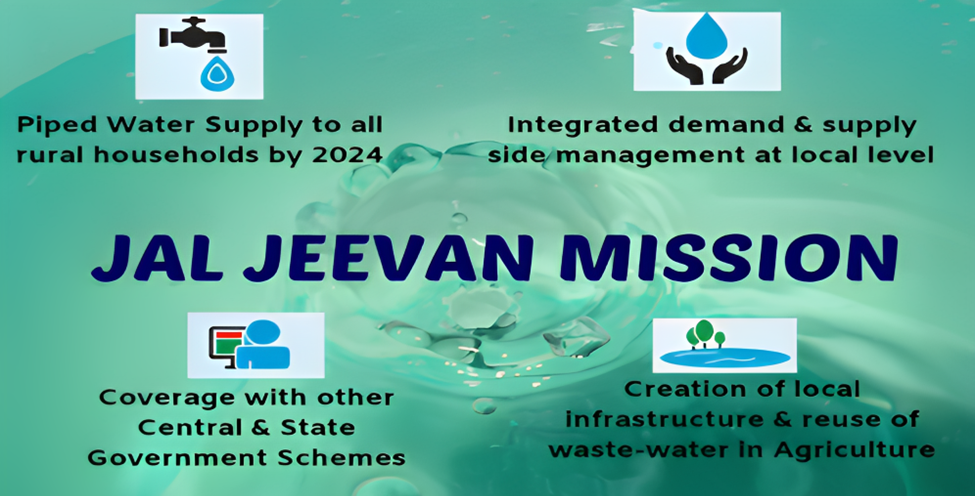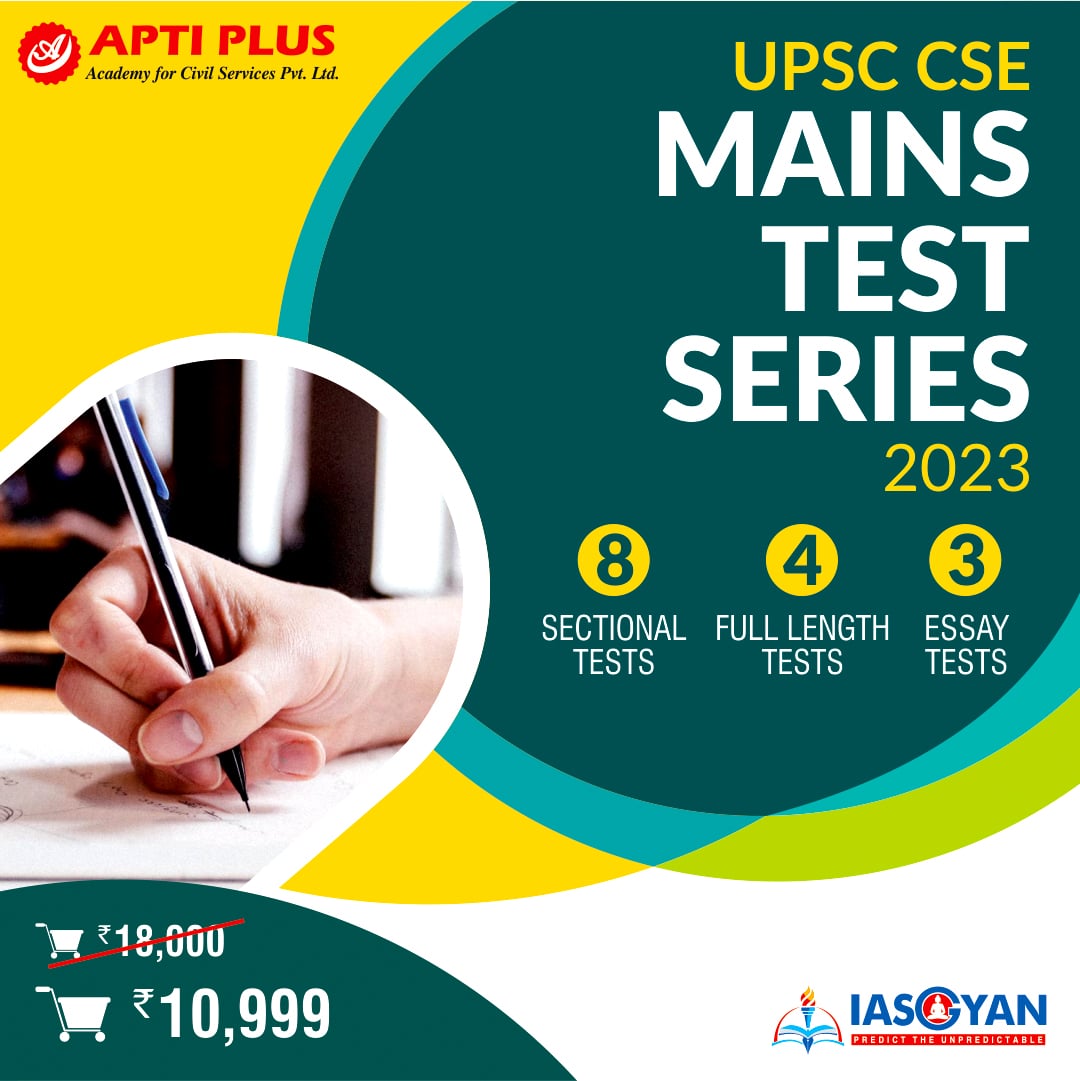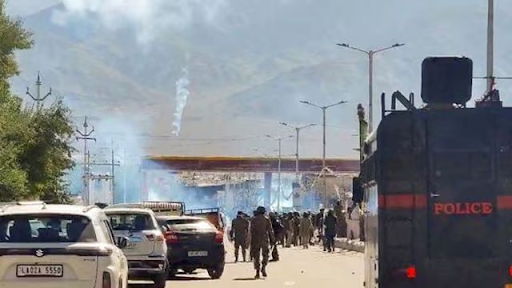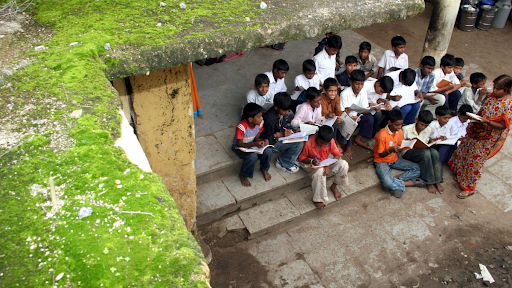
Copyright infringement not intended
Context: The Jal Jeevan Mission (JJM) is a flagship initiative of the Government of India to provide piped potable water to every rural household by 2024. According to a study by the World Health Organization (WHO) and commissioned by the Jal Shakti Ministry, the successful implementation of JJM could prevent nearly 4,00,000 deaths from diarrhoea in India.
Details
- The study, conducted by the World Health Organization (WHO), is an extrapolation and doesn’t compute the number of diarrhoeal deaths averted, at the present levels of coverage.
- It also doesn’t account for the degree of contamination in the piped water now being made available. The data required to arrive at its estimates were obtained from the United Nations population data, the 2018 National Sample Survey and data on water quality collected by the JJM.
Highlights of the Study Report
- The study estimated that 14 million DALYs (Disability Adjusted Life Years) could be avoided by providing piped water to all rural households in India. DALYs are a measure of the overall disease burden, expressed as the number of years lost due to ill health, disability or early death.
- A DALY represents the loss of the equivalent of one year of full health and are a way to account for the years of life lost due to premature mortality (YLLs) and the years lived with a disability (YLDs), due to prevalent cases of a disease or a health condition, in a population.
- The study also calculated that this would save close to $101 billion and 66.6 million hours every day that would otherwise have been spent — predominantly by women — collecting water.
- Currently, only 62% of rural households in India have piped water connections, up from 16.6% in 2019 when the Jal Jeevan Mission (JJM) scheme was launched.
- According to the study, one potable water connection is being provided every second in India, five States including Gujarat, Telangana, Goa, Haryana, and Punjab and 3 Union Territories — Andaman & Nicobar Islands, Daman Diu & Dadra Nagar Haveli and Puducherry have reported 100% coverage.
- The study highlighted that “Every dollar invested in sanitation interventions gives a $4.3 return in the form of reduced health care costs”, and also empowered women and children, who are the primary beneficiaries of tap water supply at home. Women no longer have to spend hours fetching water from distant sources, and children can attend school regularly without falling sick due to water-borne diseases.

Jal Jeevan Mission
About
- Jal Jeevan Mission (JJM) is a flagship programme of the Government of India launched in 2019 intending to provide Functional Household Tap Connection (FHTC) to every rural household by 2024.
- The mission is based on the principle of community ownership and management of water resources and infrastructure.
Features of JJM
Demand-driven and Decentralized programme
- JJM is a demand-driven and decentralized programme that empowers Gram Panchayats and their sub-committees, such as Village Water and Sanitation Committees (VWSCs) or Paani Samitis, to plan, implement, operate and maintain their water supply systems.
- They are supported by the District Water and Sanitation Missions (DWSMs) and the State Water and Sanitation Missions (SWSMs) in terms of technical guidance, fund allocation and monitoring. The National Jal Jeevan Mission (NJJM) provides overall policy direction, coordination and oversight.
- This bottom-up approach ensures that the water supply solutions are context-specific, sustainable and responsive to the needs and preferences of the users.
Focuses on service delivery
- JJM focuses on service delivery rather than mere infrastructure creation. It aims to provide 55 litres per capita per day (lpcd) of potable water to every rural household through FHTCs, as well as water for public institutions like schools, anganwadis, health centres, etc.
- The service delivery standards are defined in terms of quantity, quality, regularity and affordability of water supply. The users are expected to pay a nominal user fee for the O&M of the water supply systems.
- The VWSCs or Paani Samitis are responsible for ensuring that the service delivery standards are met and grievances are redressed.
Source sustainability and greywater management
- JJM integrates source sustainability and greywater management as essential components of water supply. It promotes groundwater recharge through point recharge sources, rainwater harvesting, afforestation, de-silting of minor irrigation tanks, rejuvenation of water bodies, etc. It also encourages basic treatment and re-use of greywater for agriculture and other purposes.
- These measures help in augmenting the availability of water, reducing the stress on groundwater resources and preventing environmental degradation.
Utilizing technologies for ensuring water quality
- JJM harnesses evolving technologies for water quality monitoring and surveillance, operation and maintenance, treatment, etc. It also geo-tags the assets created under the mission for better accountability and transparency. For instance, JJM uses sensor-based devices to measure the flow and quality of water at various points in the water supply chain.
- It uses mobile applications to capture real-time data on FHTC coverage, functionality status, user feedback, etc. These technologies enable data-driven decision-making and performance assessment at all levels.
Flexible and increased financing to the states and UTs
- JJM provides flexible and increased financing to the states and UTs through a combination of central and state funds, convergence with other schemes like MGNREGA, SBM 2.0, etc., and community contribution of 5% or 10% of the capital expenditure depending on the category of the village.
- The fund-sharing pattern between the centre and the states/UTs is;
- 90:10 for Himalayan and North-Eastern states/UTs
- 50:50 for other states/UTs
- 100:0 for UTs without legislature
- 100:0 for aspirational districts
- Fund utilization is linked to the achievement of physical and financial milestones and adherence to the JJM guidelines.
Capacity building and technical assistance
- JJM supports capacity building and technical assistance at all levels, from national to village level, through various institutions and platforms like National Jal Jeevan Mission (NJJM), State Water and Sanitation Missions (SWSMs), District Water and Sanitation Missions (DWSMs), Jal Shakti Kendras (JSKs), etc.
- These institutions provide training, handholding, mentoring, knowledge sharing, innovation promotion, etc. to the stakeholders involved in the implementation of JJM. They also facilitate cross-learning and best practice dissemination among the states/UTs and the Gram Panchayats.

Significances of JJM
Improve the quality of life
- JJM is a transformative programme that aims to improve the quality of life and socio-economic development of rural India by ensuring a safe and adequate drinking water supply to every household.
- According to the official website of JJM, access to safe drinking water will reduce the burden of water-borne diseases, improve hygiene and sanitation practices, enhance human dignity and empower women and girls.
- It will also save time and energy spent on fetching water from distant sources, which can be used for productive purposes such as education, employment, agriculture, etc.
Aligned with the Sustainable Development Goals (SDGs)
- JJM is aligned with the Sustainable Development Goals (SDGs), especially SDG 6 on clean water and sanitation, as well as the National Rural Drinking Water Programme (NRDWP) guidelines and the National Water Policy (2012).
- JJM follows a demand-driven approach that respects the preferences and choices of rural communities.
- It also adopts a service delivery model that ensures a regular and reliable supply of potable water at adequate quantity and pressure.
Participatory and inclusive programme
- JJM is a participatory and inclusive programme that involves all stakeholders, especially women, children, marginalized groups, etc., in the planning, implementation and management of water supply systems at the village level.
- JJM promotes community ownership and collective responsibility for the operation and maintenance of the water infrastructure.
- It also encourages convergence with other schemes and programmes such as Swachh Bharat Mission, MGNREGA, Jal Shakti Abhiyan, etc., for creating synergies and maximizing outcomes.
Climate-resilient programme
- JJM is a climate-resilient programme that addresses the challenges of water scarcity, droughts, floods, contamination, etc., by promoting source sustainability and greywater management measures.
- JJM emphasizes rainwater harvesting, groundwater recharge, watershed development, water conservation, reuse and recycling of wastewater, etc., to augment and protect water resources.
- It also supports water quality monitoring and surveillance activities to ensure compliance with the prescribed standards.
Catalytic programme
- JJM is a catalytic programme that creates opportunities for livelihoods, employment, entrepreneurship, innovation, etc., in the rural water sector.
- It leverages the potential of local skilled and unskilled workers, self-help groups, village organizations, etc., for providing various services such as plumbing, masonry, electrical works, water testing, etc.
- It also fosters a culture of innovation and technology adoption by supporting research and development initiatives, start-ups, incubators, etc., in the field of water supply.
JJM faces several challenges in its implementation such as;
Lack of awareness and demand generation among rural communities
- Many rural households are not aware of the benefits of having a tap connection or the process of applying for one. They may also lack the motivation or willingness to pay for the service or contribute to its operation and maintenance. Therefore, there is a need for more information, education and communication (IEC) activities to create awareness and demand for JJM among the rural population.
Inadequate institutional capacity and human resources at various levels
- The implementation of JJM requires effective coordination and collaboration among various departments and agencies at the central, state, district and village levels. However, there may be gaps in the institutional arrangements, roles and responsibilities, accountability mechanisms, etc., that hamper the smooth functioning of JJM.
- There may be a shortage of skilled and trained human resources at different levels, especially at the village level, to plan, execute, monitor and maintain the water supply schemes under JJM
Technical issues related to water quality, treatment, operation and maintenance
- The quality of water sources may vary across regions and seasons and may be affected by natural or anthropogenic factors. Therefore, appropriate water quality testing, treatment and monitoring systems are required to ensure safe drinking water for rural households.
- The operation and maintenance of the water supply infrastructure may pose challenges due to a lack of funds, technical expertise, spare parts, etc.
- There is also a need for regular surveillance and feedback mechanisms to ensure timely detection and resolution of any technical issues.
Financial constraints and delays in fund flow
- The implementation of JJM requires substantial financial resources from both the central and state governments as well as the rural communities. However, there may be delays or gaps in the allocation, release, utilization and reporting of funds at different levels due to various reasons.
- There may be issues related to the convergence of funds from different sources or schemes, such as the 15th Finance Commission grants, MGNREGA funds, Swachh Bharat Mission funds, etc. There is also a need for more transparency and accountability in the financial management of JJM.
Coordination gaps among different departments and agencies
- The implementation of JJM involves multiple stakeholders from different sectors and domains, such as water resources, sanitation, health, education, environment, etc. However, there may be a lack of coordination or integration among these departments and agencies at different levels due to various reasons.
- This may lead to duplication of efforts, wastage of resources or conflicting interests. Therefore, there is a need for more inter-sectoral convergence and collaboration for JJM.
Social issues related to equity, gender, caste, etc.
- The provision of tap connections to all rural households may face social barriers or challenges due to factors such as caste discrimination, gender inequality, land ownership issues, migration patterns etc.
- These factors may affect the access, affordability or acceptability of tap water among different sections of rural society. Therefore, there is a need for more social mobilization and empowerment activities to ensure equitable and inclusive participation and benefits for all under JJM.
Environmental issues related to over-exploitation of groundwater, pollution of surface water sources etc.
- The implementation of JJM may have adverse impacts on the environment if not done sustainably. For instance, the over-exploitation of groundwater may lead to depletion of aquifers, land subsidence or saltwater intrusion.
- The pollution of surface water sources due to agricultural runoff, industrial effluents or domestic sewage may affect the quality and availability of water for drinking purposes. Therefore, there is a need for more environmental protection and conservation measures under JJM.
Monitoring and evaluation challenges related to data availability quality and analysis
- The monitoring and evaluation (M&E) of JJM is essential to measure the progress, performance and impact of the mission. However, there may be challenges related to the availability, quality and analysis of data at different levels. For instance, there may be gaps or errors in the baseline or outcome data of rural households, water sources or water supply schemes.
- There may be a lack of standardized or user-friendly tools or platforms for data collection, reporting or dissemination. Therefore, there is a need for more robust and reliable M&E systems for JJM.
To overcome these challenges and achieve the objectives of JJM, some possible ways forward are:
Strengthening IEC campaigns for creating awareness and demand among rural communities
- Information, Education and Communication (IEC) campaigns are essential for generating awareness and demand for safe and adequate water supply among rural communities.
- IEC campaigns can also help in promoting water conservation, hygiene and sanitation practices, and community ownership of water supply systems.
- IEC campaigns should be designed and implemented in a participatory manner, using local languages, media and cultural forms.
Enhancing capacity building and technical assistance for all stakeholders
- Capacity building and technical assistance are required for all stakeholders involved in the planning, implementation, operation and maintenance of water supply systems. This includes central and state governments, district and block officials, gram panchayats, village water and sanitation committees, self-help groups, NGOs, private sector partners, and community members.
- Capacity building and technical assistance should focus on improving skills, knowledge, attitudes and behaviours related to water supply systems.
Adopting appropriate technologies for water supply systems based on local context and needs
- Appropriate technologies for water supply systems should be selected based on local context and needs, such as availability and quality of water sources, topography, climate, socio-economic conditions, and preferences of communities.
- Appropriate technologies should be cost-effective, reliable, sustainable, user-friendly, and environmentally friendly. Some examples of appropriate technologies are solar-powered pumps, gravity-fed systems, rainwater harvesting structures, household water treatment devices, etc.
Ensuring timely release and utilization of funds
- Timely release and utilization of funds are crucial for ensuring the smooth implementation of water supply systems. Funds should be released in a transparent and accountable manner, following the guidelines and norms of JJM.
- Funds should be utilized efficiently and effectively, avoiding delays, leakages, wastages and misappropriation. Funds should be monitored regularly at all levels using online platforms and social audits.
Fostering convergence and collaboration among different schemes and sectors
- Convergence and collaboration among different schemes and sectors are essential for achieving synergy and complementarity in providing water supply services to rural communities.
- Convergence and collaboration should be fostered among schemes such as Swachh Bharat Mission-Gramin (SBM-G), MGNREGA, PMAY-G, etc., as well as sectors such as health, education, agriculture, etc.
- Convergence and collaboration should be facilitated through joint planning, implementation, monitoring and evaluation at all levels.
Ensuring community participation and ownership in all stages of water supply systems
- Community participation and ownership are key factors for ensuring the sustainability and functionality of water supply systems. Community participation and ownership should be ensured in all stages of water supply systems such as planning,
Addressing social and environmental issues through participatory planning and implementation
- JJM should involve the local communities and stakeholders in the planning, design, execution, and management of water supply schemes. This would ensure that the schemes are responsive to the needs and preferences of the users, as well as sensitive to the local ecological and hydrological conditions.
- Participatory approaches would also foster ownership, accountability, and transparency in the delivery of water services.
Establishing robust monitoring and evaluation mechanisms for tracking progress and outcomes
- JJM should develop a comprehensive and reliable data system that captures the status and performance of water supply schemes at various levels. The data should be regularly updated and verified through independent audits and surveys. The data should also be used for evidence-based decision-making, feedback, and learning.
- JJM should also establish a set of indicators and targets to measure the outcomes and impacts of the program on various dimensions such as health, education, gender, and livelihoods.
Learning from best practices and innovations from within and outside the country
- JJM should adopt a learning-oriented approach that identifies, documents, and disseminates the successful models and practices of water supply management from different regions and contexts.
- JJM should encourage and support innovation and experimentation in the water sector, such as new technologies, methods, partnerships, and financing mechanisms.
- JJM should foster a culture of knowledge sharing and collaboration among various actors and stakeholders in the water sector.
Conclusion
- JJM is a game-changer for rural water supply in India. It has the potential to improve the health, hygiene and socio-economic status of millions of rural households. It also has the potential to contribute to the achievement of the Sustainable Development Goals (SDGs) related to water, sanitation, health, education, gender equality, etc. However, JJM also faces several challenges such as behavioural change, institutional coordination, technical complexity, social inclusion, etc. that need to be addressed through collective action and collaborative efforts of all the stakeholders. JJM is not just a government programme. It is a people's movement. It is a mission for Jal Jeevan.
Must Read Articles:
Jal Jeevan Mission: https://www.iasgyan.in/daily-current-affairs/jal-jeevan-mission-37
|
PRACTICE QUESTION
Q. What are the main features and significance of the Jal Jeevan Mission? How does it address the challenges of water scarcity, quality, and equity in rural India? What are the key factors for ensuring the success and sustainability of the mission? How can the mission be aligned with other national and global goals related to water, sanitation, health, and the environment?
|
https://epaper.thehindu.com/ccidist-ws/th/th_delhi/issues/39152/OPS/GKSBBA6S8.1+GGDBBATMP.1.html











